Page 2 of 3
Posted: Tue May 23, 2006 9:02 pm
by Cossie
-Mick- wrote:if I have to start the vehicle I'll take the 2nd out and jump off it......... then I'll put it back in..................... simple enough and I still have the dual battery setup protected with fuses in case it shorts which protects many hundreds of dollars worth of batteries and fridge. I simply wouldn't run a dual setup without a fuse.....................
Cossie how about telling us how you would set things up if you disagree..... just syaing we're wrong doesn't really lead to useful debate

JuJu I guess I'm setting up my own power pack of sorts. The retail ones come with crap amp hour/ capacities and thin wiring for big $$$. Even the 600 dollar or so thumpers are only 80ah or something
There is no point in me telling you if you are so hellbent in putting a fuse in it. Part of my job involves fitting dual battery sytems to 4wd's, including many in the back of ute's and 3rd batteries etc. etc. I have also removed and rewired many dual battery sytems because people haven't fully understood the the requirements and possible benefits of dual battery systems. It just seems funny that a company thats been manufacturing and fitting 4wd accessories on such a huge scale for approx 30 years doesnt feel the need to use a fuse or circuit breaker

btw, I did actually mention how to do it before without the fuse...
Posted: Tue May 23, 2006 9:06 pm
by -Mick-
Cossie wrote:-Mick- wrote:if I have to start the vehicle I'll take the 2nd out and jump off it......... then I'll put it back in..................... simple enough and I still have the dual battery setup protected with fuses in case it shorts which protects many hundreds of dollars worth of batteries and fridge. I simply wouldn't run a dual setup without a fuse.....................
Cossie how about telling us how you would set things up if you disagree..... just syaing we're wrong doesn't really lead to useful debate

JuJu I guess I'm setting up my own power pack of sorts. The retail ones come with crap amp hour/ capacities and thin wiring for big $$$. Even the 600 dollar or so thumpers are only 80ah or something
There is no point in me telling you if you are so hellbent in putting a fuse in it. Part of my job involves fitting dual battery sytems to 4wd's, including many in the back of ute's and 3rd batteries etc. etc. I have also removed and rewired many dual battery sytems because people haven't fully understood the the requirements and possible benefits of dual battery systems. It just seems funny that a company thats been manufacturing and fitting 4wd accessories on such a huge scale for approx 30 years doesnt feel the need to use a fuse or circuit breaker

btw, I did actually mention how to do it before without the fuse...
yeah my apologies this thread moved too quick and I missed where you mentioned that... thanks.
I'm not hell bent on putting a fuse in but that seems the best way to me right now. Feel free to convince me otherwise I don't claim to understand 1/10 th of auto electrics!!!
That's why I posted the question

sounds like I could learn a bit from you

Posted: Tue May 23, 2006 9:08 pm
by Bad JuJu
Cossie wrote:
There is no point in me telling you if you are so hellbent in putting a fuse in it. Part of my job involves fitting dual battery sytems to 4wd's, including many in the back of ute's and 3rd batteries etc. etc. I have also removed and rewired many dual battery sytems because people haven't fully understood the the requirements and possible benefits of dual battery systems. It just seems funny that a company thats been manufacturing and fitting 4wd accessories on such a huge scale for approx 30 years doesnt feel the need to use a fuse or circuit breaker

btw, I did actually mention how to do it before without the fuse...
Yeah again I understand your point of view, but its cheap insurance..
Also I dont understand how the location of the anderson plugs or wire routing even in conduit can possibly avoid the need for a PAIR of fuses/circuit breakers to be safe and avoid potential disaster.
Posted: Tue May 23, 2006 9:15 pm
by Cossie
Bad JuJu wrote:[
Also I dont understand how the location of the anderson plugs or wire routing even in conduit can possibly avoid the need for a PAIR of fuses/circuit breakers to be safe and avoid potential disaster.
then even I cant help you I'm afraid

Posted: Tue May 23, 2006 9:16 pm
by Bad JuJu
Bare in mind this is all in a touring rig, maybe subjected to 100's of KM of corrigations, vibrations and grit will grind through most things eventually. Ive seen metal ground down by plastics, plastics ground by other plastics, cracks in things that were sold as unbustable.
Posted: Tue May 23, 2006 9:18 pm
by Bad JuJu
Cossie wrote:Bad JuJu wrote:[
Also I dont understand how the location of the anderson plugs or wire routing even in conduit can possibly avoid the need for a PAIR of fuses/circuit breakers to be safe and avoid potential disaster.
then even I cant help you I'm afraid

Draw it up... I would like to understand.
Posted: Tue May 23, 2006 9:21 pm
by -Mick-
yeah for my purposes I'm still sold on circuit breakers I'm afraid.....
If I ever did add a winch I'd possibly add another cranking battery to back it up. I know enough to know that continually high loads like winching on a deep cycle AGM like mine is a good way to wreck an expensive battery

Thanks all for the replies so far definently good debate

Posted: Tue May 23, 2006 9:27 pm
by Bad JuJu
Bloody hell the replies came out quick..
Posted: Tue May 23, 2006 9:29 pm
by -Mick-
Bad JuJu wrote:Bloody hell the replies came out quick..
it's a sprint race pal. I'm on a laptop too my hands are sore as

Posted: Wed May 24, 2006 12:47 am
by drivesafe
OK Mick, first off you don’t say if you are going to keep the motor running, when you connect to the battery.
Next no matter what size cable you use and / or what type of battery you are going to be charging, you are NEVER going to pull 50 amps down that set up so 50 amp Anderson plugs are all you need.
Again, why would you want a 10mm2 circuit breaker. The whole idea of the circuit breaker is to protect everything on the circuit and if you wanted a quick break time, it would take at least 200 amps to trip a 100 amp circuit breaker in a short time and because of both the length and the size of the cable, you are not going to get a 200 amp load capable of tripping the circuit breaker quick enough to avoid damage being caused.
A 30 or at most 40 amp circuit breaker will be heaps big enough.
If you ever need to jump start the vehicle, put the second battery next to the vehicle and use a set of jumper leads. The closer the battery is to the flat battery, the high both the voltage and current will be while you are cranking.
If you want to really charge your second battery and be able to do it at VERY long distances from your vehicle WITHOUT the need for very heavy and grossly expensive cable. Simply connect an inverter to the vehicle battery and run an ordinary 240 extension cord to a battery charger placed next to your second battery.
There is a lot more to it than what I have posted but it gives you an idea of what I’m on about.
Posted: Wed May 24, 2006 7:26 am
by -Mick-
charger and inverter is intriguing.................. are there any special requirements like spending big bucks on some fang dangled regulated supply thing????
I simply have 0 idea about that stuff

Posted: Wed May 24, 2006 8:36 am
by drivesafe
Hi Mick, give me an idea of what battery set up you have in your vehicle now and I can give you a better idea of what can be done.
Basically though, all you need is a small battery charger and an inverter with about double the output capacity of what the charger needs, this will stop the inverter from being over worked.
If you only have one battery in your vehicle then you will need to watch the voltage level of your cranking battery.
Using a small battery charger and inverter will mean that it will take quite a few hours to charge your camp site battery but it also means that you have plenty of time to check the state of your cranking battery without it suddenly being flattened.
This set up has one huge advantage over straight battery to battery set ups. Because the second battery is being charged by the battery charger and the first battery is supplying the inverter with power you can actually charge the second battery to a high voltage level than what the first battery is supplying.
If you wanted to automate the set up, you could install a dual battery charge controller that would automatically isolate the cranking battery when it got down to 12 volts. Note most dual battery charge controller DO NOT work this way but I will PM you with some details if you wish.
Posted: Wed May 24, 2006 9:07 am
by -Mick-
yeah please do mate

basically now I have a 12 month old wet cell 600 or 700 cca cranking battery and a new std alternator........ that's it. It s a 87 4runner.
I have purchased a redarc battery isolator which sends all the charge to the primary battery until it reaches 13.8 volts and then charges the 2nd once the first is full. With the ignition off it disconnects the primary so that it is preserved and only discharges the aux.
I also have a 120ah fullriver agm deep cycle battery as the aux. It is new. I haven't installed anything yet.
Posted: Wed May 24, 2006 9:29 am
by drivesafe
Hi again Mick, the Redarc are a good isolator but in your case it will work for a standard in vehicle dual battery set up but if you set up an inverter it will virtually isolate as soon as you turn the motor off so you would have to set up in a way that would by pass the Redarc.
I’ll send you a PM.
Cheers.
Posted: Wed May 24, 2006 4:24 pm
by j-top paj
drivesafe wrote:
Next no matter what size cable you use and / or what type of battery you are going to be charging, you are NEVER going to pull 50 amps down that set up so 50 amp Anderson plugs are all you need.
thats what i was thinking.
i havnt read the whole thread properly so there may be something im missing.
if the second battery is just being used for items like fridges, lighting etc... and your NOT going to start the car of it then 50amps should be fine.
your only charging the second battery. i dont think your going to get 50amps coming out of the main battery to charge the second battery.
Posted: Wed May 24, 2006 4:36 pm
by drivesafe
Hi j-top paj, there is rarely an occasion where any 4x4, camper trailer or caravan handles anything like 50 amps.
Even if someone does start their vehicle off the second battery, 50 amp Anderson plugs are rated at very high current loads for a few second so they would still do the job.
Higher current rated Anderson plug are designed for use in areas where the is constant high current required, such as electric folk lifts.
Cheers.
Posted: Thu May 25, 2006 9:53 am
by -Mick-
I came across these isolators for anyone contemplating dual or triple batteries

Almost tempted to sell my redarc before I install it and buy one of these instead!!! Service from the bloke who makes em is tops too
 http://www.traxide.com.au
http://www.traxide.com.au
Posted: Thu May 25, 2006 9:51 pm
by V8 Middy
My 2c worth:
When the aux battery is in the car, connect the -ve lead to the chassis and just have the anderson plug on thhe +ve, that way you can use both sides of the plug and it will handle double the current. Also, if the earth lead is big enough, to start or winch, 1 jumperlead from +ve to +ve will do it.
USE A FUSE you don't want to know how much it cost me to rebuild my truck after it caught on fire. Don't find out!!!
Posted: Fri May 26, 2006 7:39 am
by drivesafe
V8 Middy wrote:My 2c worth:
When the aux battery is in the car, connect the -ve lead to the chassis and just have the anderson plug on thhe +ve, that way you can use both sides of the plug and it will handle double the current. Also, if the earth lead is big enough, to start or winch, 1 jumperlead from +ve to +ve will do it.
USE A FUSE you don't want to know how much it cost me to rebuild my truck after it caught on fire. Don't find out!!!
Why would you use a device, in this case, an 50 amp Anderson plug, that has the polarity clearly mark on it, in the manor you suggest, when it would be far safer to just use the positive terminal of a 175 amp Anderson plug.
Next, in most cases you MIGHT get away with using the chassis as the earth return, but the problem is that you have to be 110% sure that you have absolutely no resistance in the chassis, which could caused by paint, rust or any number of other things, that may cause any form of resistance.
Note, there is NO effective way to determine, in advance of an installation, if there is a resistive point in the chassis without actually applying a large load, for a long period of time and see if you get a voltage drop. Not realistic.
With any high current needs, whether it be for charging another battery, powering a cigarette lighter socket, running some driving lights or what ever, if there is the slightest resistive spot anywhere in the chassis or body, you are not only going to get a voltage drop but you could get a hot spot, and in a worst case situation, a hot spot could cause a fire.
Play it safe and install a negative cable.
Posted: Fri May 26, 2006 8:38 am
by r0ck_m0nkey
Bad JuJu wrote:I reckon you may need to up your anderson plug size from 50A.
Bad JuJu wrote:Fawk Fuses, you can get a manually resetable 100A @ 12v circuit braker, about $25.
You do realise with these two statements, you would have a 50A rated device in a 100A protected area. So what happens if something happens and it draws 90A? not to mention what it takes for a circuit breaker to react. Kind of defeats the purpose of the the cicuit protection.
Posted: Fri May 26, 2006 10:06 am
by -Scott-
r0ck_m0nkey wrote:Bad JuJu wrote:I reckon you may need to up your anderson plug size from 50A.
Bad JuJu wrote:Fawk Fuses, you can get a manually resetable 100A @ 12v circuit braker, about $25.
You do realise with these two statements, you would have a 50A rated device in a 100A protected area. So what happens if something happens and it draws 90A? not to mention what it takes for a circuit breaker to react. Kind of defeats the purpose of the the cicuit protection.
Bad JuJu did suggest the Anderson should be larger than 50A.
Posted: Fri May 26, 2006 11:35 am
by r0ck_m0nkey
-Scott- wrote:r0ck_m0nkey wrote:Bad JuJu wrote:I reckon you may need to up your anderson plug size from 50A.
Bad JuJu wrote:Fawk Fuses, you can get a manually resetable 100A @ 12v circuit braker, about $25.
You do realise with these two statements, you would have a 50A rated device in a 100A protected area. So what happens if something happens and it draws 90A? not to mention what it takes for a circuit breaker to react. Kind of defeats the purpose of the the cicuit protection.
Bad JuJu did suggest the Anderson should be larger than 50A.
My bad, i misread it once it was engulfed into this entire thread.

Posted: Fri May 26, 2006 6:36 pm
by -Mick-
got some more bits together over the last 2 days

thought I'd update.
The cable my sparky mate flogged for me....... its huge welding cable

No voltage drop here. Sorry about the phone camera.......

I ended up having to get 175 amp anderson plugs anyway cause this cable won't fit the 50 amp ones. They're pretty beefy

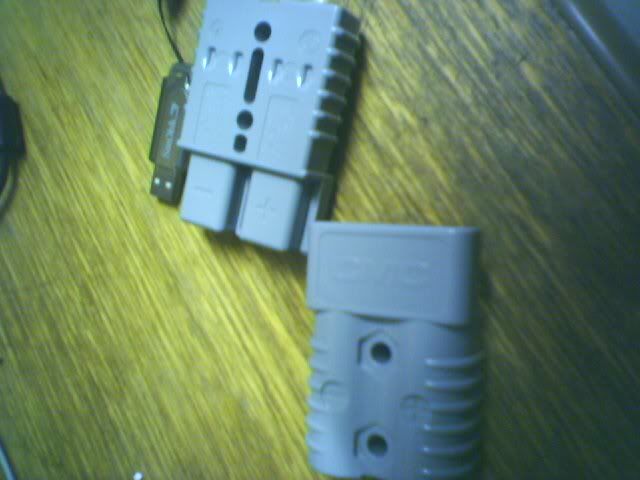
The battery..........................
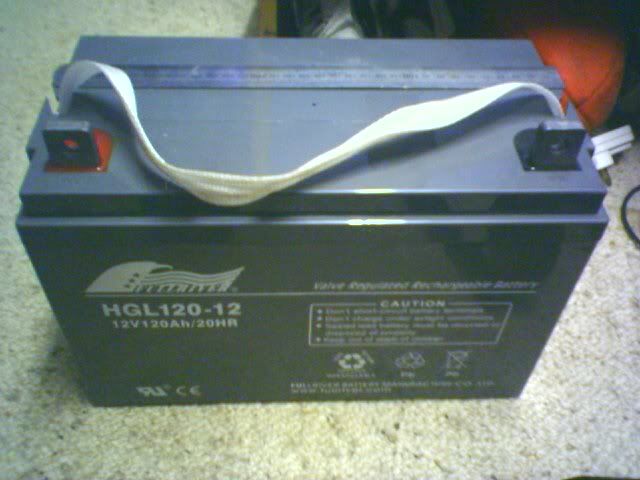
and a std box for it...................
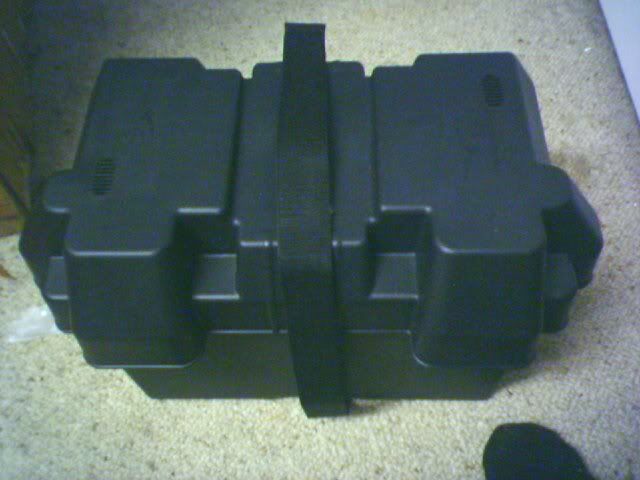
Posted: Fri May 26, 2006 6:45 pm
by -Mick-
Also got a 16 amp flush mount socket with a neat threaded ring nut

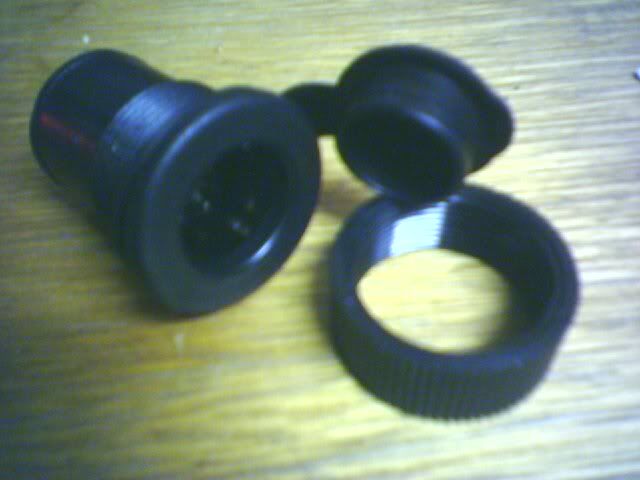
Going to grab another one too and run them in the box. Portable power pack style. All you need to do is cut a 30mm hole in the box lid and wire it up. I will also be removing the dedicated power point in the back of my 4runner which runs a 30amp circuit breaker, 8 b&s cable and a hella type socket and place that in the box in the same way

That will leave me about 6 spare meters of the 8 b&s cable which will take care of the wiring inside the box

I have the circuit breaker for the dedicated fridge power point.................. but should I get another for the 2 x 16 amp 12v power points



They'll be just for lights etc

Or maybe just a 10 amp fuse for that

Thanks to all who contributed so far this has helped heaps

Posted: Fri May 26, 2006 8:32 pm
by -Scott-
That cable is freakin' huge!

How flexy is it? A few thick cores may be better for low electrical resistance, but it's not terribly vibration resistant. Heaps of fine cores (what I would expect for welding cable...) has better flex and vibration resistance.

Scott
Posted: Sat May 27, 2006 9:28 am
by -Mick-
-Scott- wrote:That cable is freakin' huge!

How flexy is it? A few thick cores may be better for low electrical resistance, but it's not terribly vibration resistant. Heaps of fine cores (what I would expect for welding cable...) has better flex and vibration resistance.

Scott
Sure is huge cable

Plenty flexy though must be good

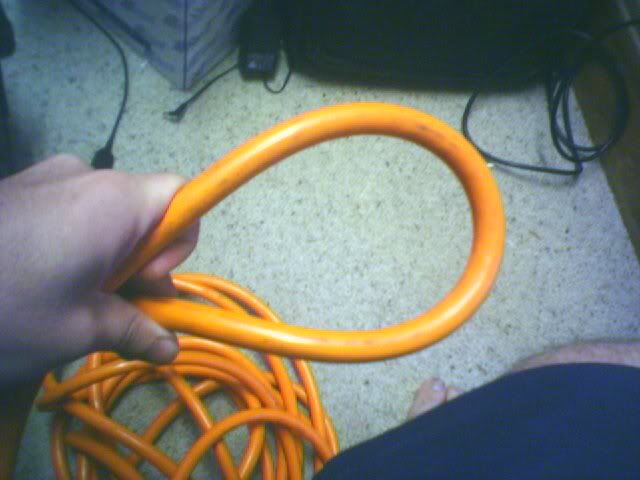
Posted: Sat May 27, 2006 10:30 am
by -Scott-
That bend looks good!

I think you need to clean your toe nails.

Posted: Sat May 27, 2006 11:07 am
by -Mick-
-Scott- wrote:That bend looks good!

I think you need to clean your toe nails.

real men don't get manicures dude

Posted: Sat May 27, 2006 1:21 pm
by -Mick-
with these power packs how do the 12v power sockets get rigged up

Obviously 12v off the battery +ve but what about grounding it

do you just run the ground back to the -ve

Posted: Sat May 27, 2006 2:21 pm
by Bad JuJu
-( (+) )-
Positive to the center pin and Negative to the outside bit.






